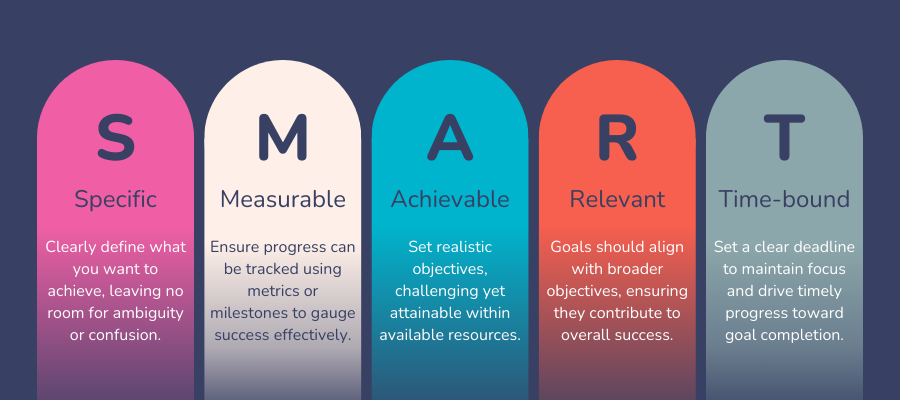Using B2B sales metrics for data-driven growth

How analytics, goals, and B2B sales KPIs can harness a data-driven approach to sales optimisation and growth.
No matter what industry you’re in, it’s likely brimming with competition. That’s why you always need to keep a keen eye on optimising your sales strategies.
Focusing on your B2B sales metrics and key performance indicators (KPIs) is one of the many ways to achieve peak performance and ensure sustained growth.
With a little know-how, you can easily leverage data-driven insights to refine your approach and maximise efficiency across the B2B sales funnel.
Analysing key data points and tracking KPIs will empower your team to identify strengths, adapt to market shifts, and capitalise on emerging opportunities. This process drives continuous improvement, enabling businesses to optimise strategies, identify opportunities, and ultimately achieve higher sales efficiency and growth within an increasingly competitive B2B landscape.
Ultimately, optimising sales strategies using data-driven insights benefits lead generation and revenue targets, strengthens customer relationships, and fosters a competitive edge. Sounding good? Let’s get stuck in.
The power of performance analytics
Performance analytics involves collecting and analysing data on specific business activities to assess their effectiveness and identify areas for improvement. For example, tracking the conversion rate of leads to sales helps you understand how well your sales funnel is working.
With accurate, up-to-date data at your fingertips, you can make business decisions that maximise results and reduce risk. Performance analytics can therefore help you continuously optimise your sales processes.
But what metrics should you be looking out for?
With so many to track, you need to align them with your KPIs and growth indicators, but here’s a good list to start with:
Must have metrics
Total revenue
Want to assess your overall financial success? This is the key metric. Your total revenue is calculated from gross income from all business activities, products, and services.
Conversion rate
B2B conversion rates are a helpful metric for identifying how many leads turn into actual opportunities. In sales, conversion rates are a percentage calculated from deals closed out of the total active pipeline. You can break this down by lead source to understand where to focus efforts.
Sales cycle length
Sales cycle length measures how long a prospect sits in the pipeline from the first engagement to when the deal is won or closed. Monitoring this will help identify bottlenecks or determine if a solution, like if more data-driven sales enablement content, is needed.
Customer acquisition cost (CAC)
Your customer acquisition cost is the total sales and marketing cost it has taken to win a customer — this can be measured over a period of time. With CAC skyrocketing by 222% in recent years, tracking and optimising is critical.
Average customer lifetime value (CLV)
Customer lifetime value looks at the total revenue a client generates throughout working with your business – using the products or services. The higher the customer lifetime value, the more valuable they are to your company’s profits.
Good for growth
Net promoter score
The Net Promoter Score (NPS) is a crucial metric that helps you understand and improve the customer experience. It is an index of 1-100 that measures how happy a customer would be to recommend a company’s products or services.
This is valuable to your long-term growth—a tenfold increase in NPS has been found to increase upsell revenue by 3.2%.
Your customers will sit in three groups: detractors, passives and promoters.
Frequency of opportunities added
This metric closely monitors the rate at which new sales leads are added to your pipeline.
Average lead response time
Lead response time determines how quickly your sales reps follow up with a lead after they have expressed interest, such as when buyer intent is shown by filling out a form or downloading a resource. Tracking this metric will allow you to identify how proactive your sales team is and whether there are any barriers to starting those conversations quickly.
Churn rate
Customer churn rate gives you a broader view of how many customers have been lost during a specific period. This usually involves cancelling a subscription or not making a repeat purchase within a particular timeframe. Measuring your churn rate will help you to focus on and optimise your customer retention strategies.
Did you know? Churn rate has been found to rise to 15% just by not replying to queries on social media. ????
Keeping an eye on your churn rate can help you optimise customer satisfaction and your presence across multiple channels.
Negative churn
The most fun metric of all! Negative churn is when new revenue from existing customers, usually from cross-sells and upgrades, outweighs what you’re losing from cancellations or downgrades. You’re doing something right if you’re looking at negative churn.
Insightful for campaign optimisation
Percentage of marketing collateral used by the sales team
Sales enablement content can be one of the most valuable assets in your arsenal when trying to move clients through the sales pipeline. After all, a solid sales enablement strategy can increase quarterly revenue by 8%.
You need to identify how efficient your sales team is in using content to tackle queries and provide solutions to pain points. Hunt out content gaps and areas for improvement.
Response rate
67% of buyers want to hear from you via email, so optimising this form of outreach is imperative. One way you can do this is by keeping an eye on email response rates. By tracking metrics like this, you can experiment with body content, CTAs, and more.
Open rate
Email is fertile ground for plenty of A/B testing, so you can continue to play with it to encourage long-term success. When assessing how to improve open rates, it is essential to look at the subject line (length and words used), time sent, and day sent.
Click through rates
Click-through rates help you identify how many people are clicking on links or CTAs that lead to a landing page or downloadable resource, for example. Use this metric to test link and button placement, colours, where they link to, and the call to action.
Community engagement
Growing a community across social media platforms such as LinkedIn, especially in B2B, is excellent for demonstrating thought leadership, strengthening brand identity and trust, and making you more accessible. And you can measure its success! Conversions, reach, engagement, presence of open discussion, UGC, click-through and conversion rates.
Don’t overlook this strategy – investing time in community engagement has been shown to improve customer retention by 66% and benefit lead generation by 68%. Not only that, but the social profiles of your business and sales team are often used during the buyers’ research process.
These are just a few B2B sales metrics that will help you focus your strategies, whether streamlining the sales process, improving customer satisfaction, aiding conversion, or strengthening growth. Looking for SaaS lead generation strategies? Read our handy guide.
Tools and tech for tip-top analytics
Want to easily access this valuable data with little effort from your team? Sales analytics software is your friend.
Plenty of automated tools will gather historical and current B2B data and refine the information into easy-to-read reports that can help predict what’s to come for your future sales outcomes, helping you optimise and refine your strategies.
It’s a fast, efficient way of making critical business decisions and minimising the potential for human error. With most B2B sales analytics tools, you’ll have access to sales data, an easy-to-use, accessible dashboard, sales reporting software that makes the information digestible, and sales forecasting features that help you predict industry trends and lay the groundwork for goal setting.
Sounds great? That’s not all. Other benefits of using sales analytics tools include:
- Can improve overall sales performance
- Better and informed decision-making
- Elevate the customer experience – you get to identify specific behaviours and preferences, tailoring your inbound and outbound activity
- Promotes efficiency – no need for manual data entry
- Makes customer segmentation a breeze – group prospects by behaviour, engagement, preferences, etc
- You can drive revenue growth from accurate data-driven decisions
There are plenty of tools on the market that can integrate features such as pipeline management, client management, performance metrics, lead management, forecasting, and more. Identify the goals you want to achieve and determine what will work best for your business needs.
Choosing and tracking the right KPIs
To achieve next-level data-driven growth, you’ll need to focus on metrics and KPIs.
Sales metrics measure sales-related performance and the efforts towards those over a period of time. They’re much broader and involve various data points.
B2B sales KPIs are used to track progress and keep an eye on performance.
Example:
KPI = Monthly lead generation
Metrics = page views, SEO performance, bounce rate, forms filled, meetings booked
Therefore, your overall business goals will influence the KPIs you communicate to your team and, in turn, the metrics that you track. We’ve already covered some valuable B2B sales metrics—let’s examine some of those B2B sales KPIs.
KPIs related to sale activity:
- Time spent on the phone
- Volume of emails sent
- Demos booked
- Follow-up attempts
KPIs related to sales and conversions:
- Sales win vs sales loss rate
- Monthly closed deal numbers
- Sales rates per sales representative
- Sales rates per product type
- MQL to SQL conversion
KPIs related to leads and the sales pipeline
- What source have new leads come through
- The revenue generated from each lead source
- Pipeline velocity (how quickly are opportunities moving through the sales pipeline)
- Lead to opportunity conversion
The role of technology in KPI tracking
Technology plays a pivotal role in tracking B2B sales KPIs. Your greatest tool? A CRM that provides a dashboard, analytics, and reporting. With a CRM system in place, you can automate the collection and analysis of data in real-time, providing accurate insights into sales team activity and performance and how that contributes to organisational success.
Real-time performance insights offer several benefits.
Firstly, they empower sales teams to make informed decisions swiftly, adjusting strategies based on current trends and customer interactions. Secondly, real-time tracking fosters proactive sales management, enabling timely interventions for sales leaders to address potential bottlenecks or issues in the sales process. Moreover, technology-driven KPI tracking enhances accountability and transparency within the organisation, as performance metrics are visible to stakeholders across departments.
Ultimately, leveraging technology for KPI tracking provides a competitive edge in B2B sales, driving efficiency, agility, and data-driven decision-making for sustainable growth and success.
Setting goals with precision
Setting realistic, motivating sales goals is crucial for your B2B sales metrics, KPIs and data-driven growth strategies.
Realistic goals ensure attainable targets, fostering a sense of accomplishment and motivation within sales teams. Learn all about motivating your sales team below. ????

Motivating your sales team
Quick and easy tips to help you motivate your sales team and on the road to success
Get your guideBy keeping teams updated with key B2B sales KPIs and metrics, such as conversion rates and customer acquisition costs, you can accurately track individual progress and adjust strategies accordingly. Motivating goals inspires higher performance, driving teams to optimise B2B sales funnel metrics and enhance sales enablement tactics.
Ultimately, setting achievable benchmarks creates a culture of accountability and continuous improvement, empowering data-driven decision-making for sustained business growth in a competitive B2B landscape. But let’s be SMART about it…

While setting goals that motivate the wider team is essential, let’s also ensure they align with company goals and objectives!
Align sales goals with the wider business objectives
Aligning sales goals with broader business objectives is essential for cohesive growth.
Firstly, identify overarching business goals, such as revenue targets, market expansion, or customer retention.
Next, establish specific B2B sales KPIs linked to these objectives, such as lead conversion rates, follow-up attempts, or closed deal rates. Ensure these metrics are measurable and aligned with the stages of the B2B sales funnel.
Communicate these goals to the sales team, emphasising how achieving them contributes to the company’s success. Provide resources and tools that support data-driven decision-making, enabling sales reps to track progress and adjust strategies accordingly. Set out an expected and realistic timeframe for reaching these goals.
Review performance against these metrics regularly, celebrating successes and addressing areas for improvement.
By integrating sales goals with broader business objectives, organisations foster a cohesive approach to growth, driving efficiency and effectiveness across the B2B sales process.
Forging a worthy alliance
The synergy between performance analytics, KPIs, and realistic, motivational goal setting is crucial for accelerating data-driven growth in B2B sales. Performance analytics provide insights into key B2B sales metrics, allowing businesses to track progress against established KPIs. These metrics inform the setting of realistic and motivating sales goals that align with broader business objectives.
When these elements work together harmoniously, sales teams gain clarity on what actions drive success and can adjust real-time strategies based on performance data.
Before we go, be sure you’re putting your best data-driven sales enablement strategy foot forward and ensure:
- You’ve set goals that align with overall business objectives and have brought everyone on board. Teamwork makes the dream work!
- Any new goals or objectives are well outlined, and your team are well equipped to achieve them.
- You’ve got the latest tech. Integrate a CRM for automated sales analytics, reporting and easy-to-access dashboards.
- Ensure your team understands the data and how to leverage it for full impact – ongoing training is never a bad thing.
This synergy fosters accountability and a culture of continuous improvement, empowering data-driven sales enablement.
By integrating performance analytics with meaningful KPIs and goal setting, organisations optimise their B2B sales funnel metrics and drive sustainable growth through informed decision-making and targeted actions.
Sopro is an award-winning B2B demand generation agency, with services tailored to a variety of industries. So, if you need lead generation services for internet companies and broadband providers, a staffing and recruitment lead generation agency, or you work in a different sector altogether, book a demo and see how we can supercharge your sales strategy.




Share